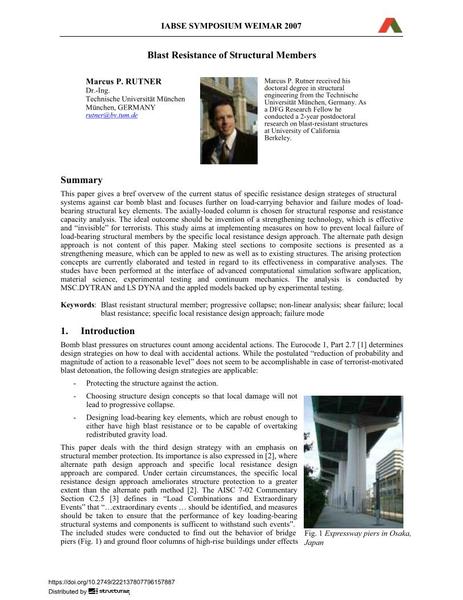Blast resistance of structural members

|
|
|||||||||||
Détails bibliographiques
| Auteur(s): |
Marcus P. Rutner
|
||||
|---|---|---|---|---|---|
| Médium: | papier de conférence | ||||
| Langue(s): | anglais | ||||
| Conférence: | IABSE Symposium: Improving Infrastructure Worldwide, Weimar, Germany, 19-21 September 2007 | ||||
| Publié dans: | IABSE Symposium Weimar 2007 | ||||
|
|||||
| Page(s): | 264-265 | ||||
| Nombre total de pages (du PDF): | 8 | ||||
| Année: | 2007 | ||||
| DOI: | 10.2749/222137807796157887 | ||||
| Abstrait: |
This paper gives a brief overview of the current status of specific resistance design strategies of structural systems against car bomb blast and focuses further on load-carrying behavior and failure modes of loadbearing structural key elements. The axially-loaded column is chosen for structural response and resistance capacity analysis. The ideal outcome should be invention of a strengthening technology, which is effective and “invisible” for terrorists. This study aims at implementing measures on how to prevent local failure of load-bearing structural members by the specific local resistance design approach. The alternate path design approach is not content of this paper. Making steel sections to composite sections is presented as a strengthening measure, which can be applied to new as well as to existing structures. The arising protection concepts are currently elaborated and tested in regard to its effectiveness in comparative analyses. The studies have been performed at the interface of advanced computational simulation software application, material science, experimental testing and continuum mechanics. The analysis is conducted by MSC.DYTRAN and LS DYNA and the applied models backed up by experimental testing. |
||||
